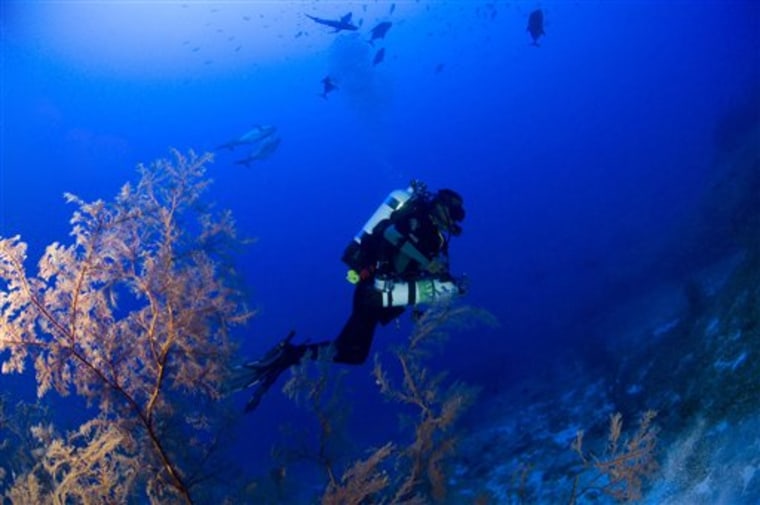Scientists over the past month explored coral reefs in the remote Northwestern Hawaiian Islands that until recently were considered too deep for scuba divers to reach.
Divers swam among previously unseen reefs as deep as 250 feet during a monthlong research trip to the islands by the National Oceanic and Atmospheric Administration vessel Hiialakai.
They unexpectedly found nursery grounds for juvenile reef fish like parrotfish and butterflyfish. They also were able to collect specimens that may help them identify new species.
"We were seeing reefs that no human has ever laid eyes on before," Randall Kosaki, the research mission's lead scientist and diver, said Tuesday. "We literally have better maps of the moon than we do of coral reefs in the Hawaiian archipelago."
Eighty-four percent of all coral under U.S. jurisdiction lies in Hawaii's waters. About 15 percent are in state waters around the main Hawaiian islands. Another 69 percent are in the Northwestern Hawaiian Islands — a stretch of mostly uninhabited atolls that President George W. Bush made a marine national monument in 2006.
Most scuba divers are able to go only about 100 feet underwater. Submersible vehicles are able to take humans deeper, but have been exploring at areas around 600 to 700 feet below the surface, Kosaki said.
Between the area where scuba divers and submersible vehicles have traveled is a "twilight zone" that has long been unexplored, he said. It includes large swaths of coral reefs that can grow up to 400 feet underwater.
"The coral reef habitat goes four times deeper than where we've been working prior to this," Kosaki told reporters.
Kosaki's team, which returned to Oahu on Sunday, used new technology that allows divers to descend deeper than was possible just a few years ago. For example, the juvenile fish nursery was spotted among algae 170 feet deep.
Brian Bowen, a research professor at the Hawaii Institute of Marine Biology, said scientists would need to study whether nurseries like these replenish fish populations in shallow reefs. Answering this question will help those managing coral reefs, he said.
"If you're dumping trash at 170 feet of water, you might be dumping it on the nursery grounds that keep your fishery going," Bowen said.
He predicted the Hiialakai's research would lead to similar dive studies at coral reefs elsewhere in the Pacific and in the Caribbean.
Kosaki said the monument's reefs were very healthy. Almost no fishing takes place in the protected zone, allowing fish populations to thrive.
The only human settlements are at a research outpost on Midway Atoll, meaning the reefs aren't damaged by runoff from housing developments and paved riverbeds like the main Hawaiian islands.
"At one time we had 100 sharks around us. It's just something you don't see here on Oahu or any of the inhabited islands," Kosaki said.
The team saw small areas of bleached coral caused by a spike in sea surface temperatures in August. An annual coral reef monitoring expedition, which is due to leave in two weeks, will monitor these areas further, Kosaki said.
The marine monument is called the Papahanaumokuakea Marine National Monument.
